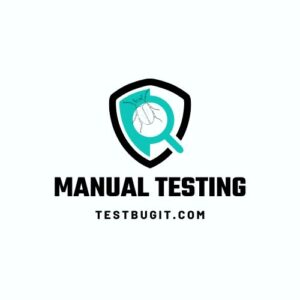Manual Testing Training placement in Hyderabad
Start Your Career with Selenium Testing Training at Testbug IT Solutions!
At Testbug IT Solutions, we specialize in providing top-notch Selenium Testing Training combined with live projects to give you hands-on experience in real-world scenarios. Our training program is designed to not only enhance your skills but also to ensure you are job-ready for the ever-evolving IT industry.
Why Choose Testbug IT Solutions?
- Comprehensive Training: Our courses cover everything from the basics to advanced Selenium testing techniques, ensuring you master every aspect of automation testing.
- Live Projects: Gain practical experience by working on live projects that simulate real-world testing environments, making you industry-ready. latest industry trends.
- Placement Assistance: We offer 100% placement assistance with a strong network of companies looking for skilled testers, ensuring you land your dream job after completing the course.
Upcoming Batches
Manual Training
10-Sept-2025
7:00 am
About Course
About the Selenium Testing Course at Testbug IT Solutions
Our Selenium Testing Course is designed to equip you with the skills needed to excel in the field of automation testing. Whether you’re a beginner or an experienced professional looking to enhance your skills, our course offers comprehensive coverage of Selenium and its applications.
Course Highlights:
Fundamentals of Selenium: Understand the core concepts of Selenium, including installation, configuration, and setup of Selenium WebDriver. Test Automation: Learn to automate web applications using Selenium WebDriver across various browsers.
Scripting with Java/Python: Gain expertise in writing Selenium scripts with Java or Python, covering both basic and advanced scripting techniques.
Framework Development: Build and maintain robust test automation frameworks using industry best practices, including data-driven and keyword-driven frameworks.
Integration with Tools: Understand how to integrate Selenium with tools like TestNG, Maven, Jenkins, and Git for continuous integration and better test management.
Handling Dynamic Elements: Master techniques for dealing with dynamic elements like pop-ups, alerts, and AJAX calls.
Cross-Browser Testing: Learn to perform cross-browser testing and ensure your application runs smoothly on different browsers.
Real-World Scenarios: Work on live projects that simulate real-world scenarios to solidify your learning and apply your skills in practical environments.
What You’ll Get:
Hands-On Learning: Practical experience through live projects to ensure you’re ready for the challenges in the automation testing field.
Expert Guidance: Learn from professionals with years of experience in automation testing, ensuring you get industry-relevant skills.
Placement Support: Upon completion, you’ll receive placement assistance to help you land a job with leading companies in the industry.
Who Should Enroll?
Freshers or graduates looking to kick-start a career in automation testing.
Professionals aiming to upskill and advance their careers in Selenium testing.
Anyone interested in mastering Selenium and working on live, industry
Course
Curruculum
Module 1: Testing basics
- Introduction to Software Testing Industry
- What is Quality?
- Why we need to deliver Quality Software?
- Why we need to do Software Testing?
- When to start Testing?
- What are the Testing Techniques?
- Static Testing
- Dynamic Testing
- Explain differences
- Static Testing and Dynamic Testing?
- Verification vs. Validation
- Prevention vs. detection
- Software Quality Assurance vs Quality Control
- What are the Testing Methodologies?
- White box Testing
- Black box Testing
- Grey box Testing
- Explain differences between Black box Testing and White box Testing?
- Explain below Terminologies?
- Mistake ➢ Error ➢ Bug
- Defect ➢ Failure
- Explain Testing Principles
Module 2: Testing classification
- Black box testing categories
- Functional Testing
- Non-Functional Testing
- Performance testing
- Security testing
- Usability testing
- compatibility Testing
Testing Methodologies
➢ Smoke Testing
➢ Sanity Testing
➢ Retesting
➢ Regression Testing
➢ Exploratory testing
➢ Adhoc Testing
➢ Localization Testing
➢ Levels of Testing
➢ Unit Testing
➢ Integration Testing
Module 3: STLC
Test Strategy
✓ Test Plan
✓ RTM
✓ Story Analysis (Requirement Analysis)
✓ Test case Design
✓ Test case Review
✓ Test Execution
✓ Defect Reports
✓ Test case Design Techniques
➢ Equivalence Partitioning
➢ Boundary Value analyses
➢ Error Guessing
✓ Test case Review Techniques
➢ Peer Review.
➢ Formal Review
➢ Walkthrough
✓ Test Case Execution
✓ Test Result
✓ How to raise a defect
✓ Defect Life Cycle
✓ Priority VS Severity
✓ Triage Team
✓ Deferred defects
✓ Defect Reports
Module 4: Agile Methodology
✓ Compare Agile with waterfall Model
✓ Compare Agile with V Model
✓ Benefits of Agile Methodology
✓ Drawbacks of Agile Methodology
✓ Introduction to Scrum Framework
✓ What is scrum?
✓ Discussion on Sprint Planning
✓ Discussion on story cards
✓ Components of Scrum Framework
➢ Scrum Roles
➢ Scrum Artifacts
➢ Scrum Events
✓ Scrum Roles and Responsibilities
➢ Product Owner
➢ Scrum Master
➢ Scrum Development team
✓ Scrum Artifacts
➢ Product Backlog
➢ Sprint Backlog
➢ Burn down Chart
✓ Scrum Events
➢ Sprint Planning Meeting
➢ Daily Scrum Meeting
➢ Sprint Review Meeting
➢ Sprint Retrospective Meeting
✓ Tools Usage in Agile
➢ Project Management Tool – JIRA
Module 5: SDLC Phases
✓ Introduction to Software Development Life Cycle (SDLC)
➢ Plan
➢ Analyze
➢ Design
➢ Development
➢ Testing
➢ Implementation
✓ Waterfall Model
✓ Advantages and Drawbacks of Waterfall Model
Module 6:Additional Technical courses
- SQL
- UNIX Section
Module7:Mobile application Testing
✓ Android apps testing
✓ iOS apps testing
Project Essentials
✓ Project Name
✓ Project Description
✓ Client Name
